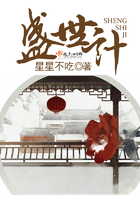This original church was modelled after the ancient Basilica, or hall of justice or of commerce: at one end was an elevated tribunal, and back of this what was called the "apsis,"--a rounded space with arched roof. The whole was railed off or separated from the auditory, and was reserved for the clergy, who in the fourth century had become a class. The apsis had no window, was vaulted, and its walls were covered with figures of Christ and of the saints, or of eminent Christians who in later times were canonized by the popes. Between the apsis and the auditory, called the "nave," was the altar; for by this time the Church was borrowing names and emblems from the Jews and the old religions. From the apsis to the extremity of the other end of the building were two rows of pillars supporting an upper wall, broken by circular arches and windows, called now the "clear story." In the low walls of the side aisles were also windows. Both the nave and the aisles supported a framework of roof, lined with a ceiling adorned with painting.
For some time we see no marked departure, at this stage, from the ancient basilica. The church is simple, not much adorned, and adapted to preaching. The age in which it was built was the age of pulpit orators, when bishops preached,--like Basil, Chrysostom, Ambrose, Augustine, and Leo,--when preaching was an important part of the service, by the foolishness of which the world was to be converted. Probably there were but few what we should call fine churches, but there was one at Rome which was justly celebrated, built by Theodosius, and called St. Paul's. It is now outside the walls of the modern city. The nave is divided into five aisles, and the main one, opening into the apsis, is spanned by a lofty arch supported by two colossal columns. The apsis is eighty feet in breadth. All parts of the church--one of the largest of Rome--are decorated with mosaics. It has two small transepts at the extremity of the nave, on each side of the apsis. The four rows of magnificent columns, supporting semicircular arches, are Corinthian. In this church the Greek and Roman architecture predominates. The essential form of the church is like a Pagan basilica. We see convenience, but neither splendor nor poetry.
Moreover it is cheerful. It has an altar and an apsis, but it is adapted to preaching rather than to singing. The public dangers produce oratory, not chants. The voice of the preacher penetrates the minds of the people, as did that of Savonarola at Florence announcing the invasion of Italy by the French,--days of fear and anxiety, reminding us also of Chrysostom at Antioch, when in his spacious basilican church he roused the people to penitence, to avert the ire of Theodosius.
The first transition from the basilica to the Gothic church is called the Romanesque, and was made after the fall of the Empire, when the barbarians had erected new kingdoms on its ruins; when literature and art were indeed crushed, yet when universal desolation was succeeded by new forms of government and new habits of life; when the clergy had become an enormous power, greatly enriched by the contributions of Christian princes. This transition retained the traditions of the fallen Empire, and yet was adapted to a semi-civilized people, nominally converted to Christianity. It arose after the fall of the Merovingians, when Charlemagne was seeking to restore the glory of the Western Empire.
Paganism had been suppressed by law; even heresies were extinguished in the West. Kings and people were alike orthodox, and bowed to the domination of the Church. Abbeys and convents were founded everywhere and richly endowed. The different States and kingdoms were poor, but the wealth that existed was deposited in sacred retreats. The powers of the State were the nobles, warlike and ignorant, rapidly becoming feudal barons, acknowledging only a nominal fealty to the Crown. Kings had no glory, defied by their own subjects and unsupported by standing armies. But these haughty barons were met face to face by equally haughty bishops, armed with spiritual weapons. These bishops were surrounded and supported by priests, secular and regular,--by those who ruled the people in small parishes, and those who ruled the upper classes in their monastic cells. Learning had fled to monasteries, and the Church, with its growing revenues and structures, became a new attraction.















